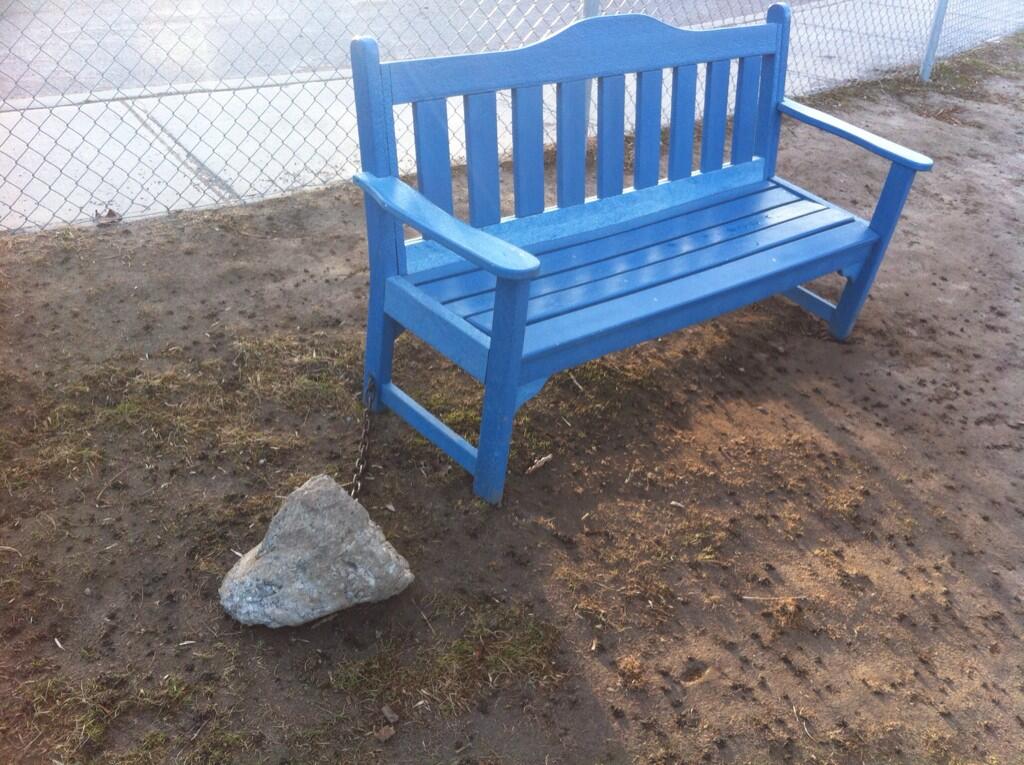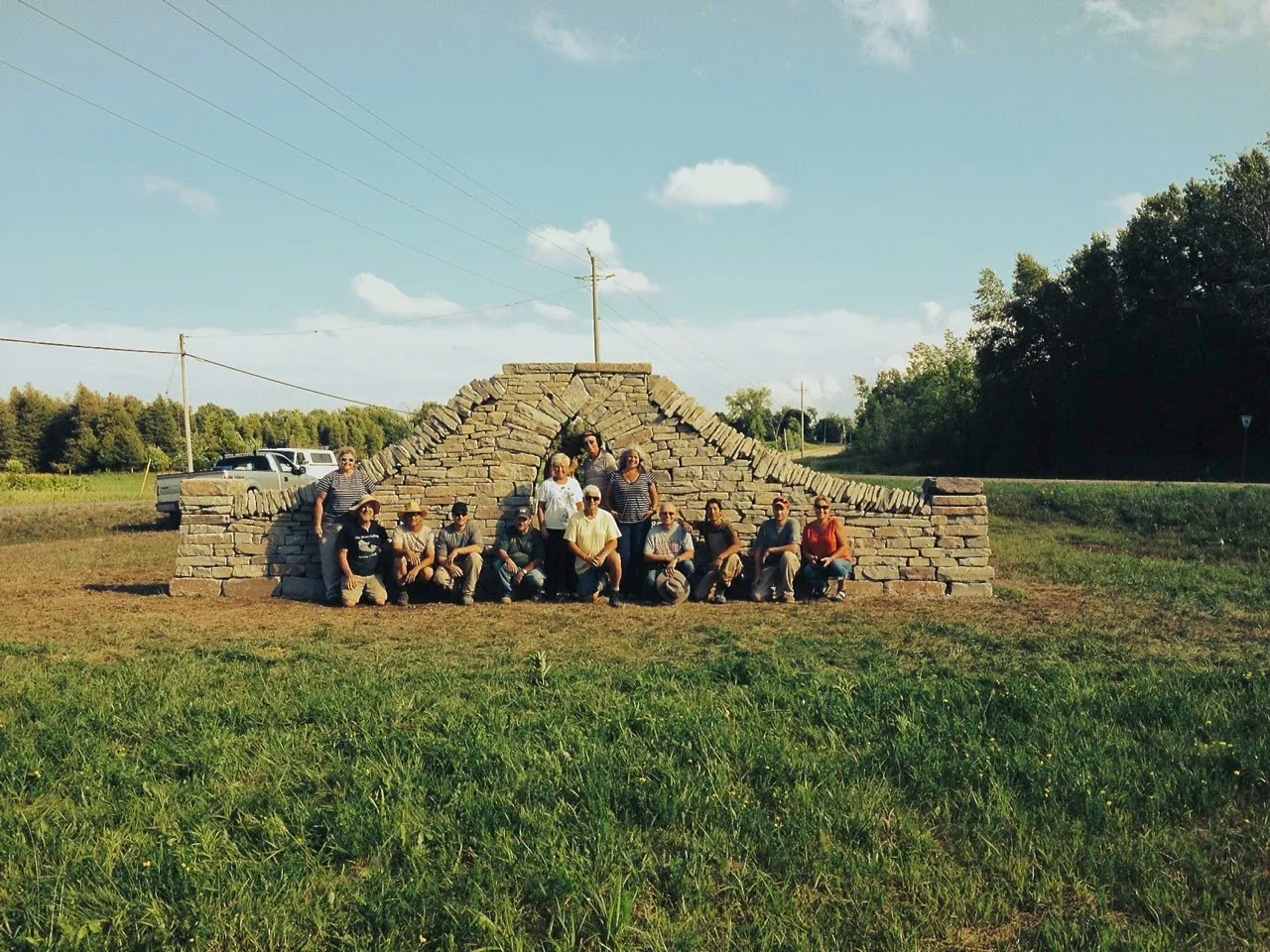While visiting West Clare recently to do some dry stone walling with other members of the DSWAI I received an email which at the time appeared to have no connection to what we were doing. The email was on a different walling subject and I replied thinking nothing of it. A warm and polite reply was promptly received thanking me for my communication and including images and some history on the 'Amherst Dry stone walls and fences'.
Upon seeing the images I suddenly felt there was a connection between the style of wall that we were building and another style of wall thousands of miles away across the Atlantic ocean on Amherst Island in Lake Ontario, Canada.
A number of things struck me about the images of the walls and the history behind them.
Firstly, how similar they were to what we were building in Miltown Malbay (which is an imitation of a local style).
Fine example of a Dry Stone Fence from Amherst Island
Fine example of a Miltown Malbay Dry Stone Wall
Secondly, I noted how the builders of the old walls would have worked to similar criteria. As mentioned in the "Tweedsmuir" an historical record of Amherst Island, one Irish waller would build a "rod" a day for a dollar or two. This reminded me vividly of a conversation I had with one of the wall builders of Inis Oirr Island who recalled building a "tape" or sixteen feet a day for two punts. A "rod" is too the equivalent of 16 feet. Both wallers were separated by nearly 3000 miles of ocean and well in excess of a century in time, with the Inis Oirr resident alive and still walling today.
Finally, I noted how they were all built by Irish people.
The Amherst Island walls date to the 1840's and 50’s. Irish immigrants (many of whom came from Ayrds Peninsula) are accredited with having brought with them the skills, knowledge and heritage to build the walls. The bedrock is close to the surface on Amherst and farmers were constantly removing rocks as they ploughed the soil (nothing new there for the west of Ireland farmer).
Consequently, the Irishman's heritage and experience lent well to the circumstances, which it appears gave rise to the plethora of stone fences and walls in this area of Canada.
A feature of the style of many of the walls both in Amherst and Clare is the lack of a batter.
Most of the walls in and around Miltown Malbay and on Amherst were built almost vertical, which could tend to shorten the life span of a dry stone wall. This lack of batter was noted by dry stone experts John Shaw Rimmington and Matthew Ring on a visit to Amherst -"However, the island has a unique aspect to it lending to this being less of an issue; the bedrock is very close to the surface suggesting less impact from frost. Besides this, the stone itself is unique in that it has an almost sand paper texture giving an extremely abrasive surface. These two items have definitely led to a longer life span for the walls regardless of the vertical batter"
Indeed these factors would play a part in adding longevity to the unbattered walls on Amherst. The Liscannor stone (whilst not sandpaper-like) does have the textured surface (for which it is famous) to add to its abrasiveness. The landscape in Miltown Malbay is somewhat more varied ranging from very shallow topsoil over bedrock (similar to Amherst) to areas of raised bog. The raised bog often surrounds the outcropping rocky areas that became the Liscannor quarry sites.
Many of the dry stone walls in and around Miltown Malbay span areas with a peaty subsoil which would not be immune to frost heave. However, Miltown Malbay is a coastal village and the climate in West Clare is quite mild all year round and not likely to have prolonged periods of sub zero temperatures, if at all. Instead of frost heave being an issue subsidence would be more likely.
Therefore, the lack of a batter could probably have a less detrimental impact on the lifespan of the Clare walls for similar reasons to those found in Amherst. Not having researched in much detail the ages of the walls I inspected whilst in this part of Clare a more accurate comparison of the longevity of the walls is not really possible. I would guess that many of the walls I saw in Clare could date from anything between 80 to 200 yrs ago, some much older. Having had a long history of dry stone walling in Ireland and also many wall building schemes initiated during the 19th and 20th centuries local knowledge is often the best source for dating.
I would guess though that the builders of these walls were working to a
style and at a
daily rate that necessitated expedience. In other words, the more they built and the faster they built it the more they were paid. A battered wall is no problem on the straight but add a turn or a curve and it is slower to build than a vertical one. It is possible the builders went straight up both because it was the fastest way and it was the way they knew. A battered face on a boundary wall in Ireland is not often present. The batter
is seen in many structural dry stone walls (like retaining walls and stone faced earthen banks) and dry stone buildings (like
Cashels) in Ireland. From my own experience of looking at historic dry stone walls in Ireland the introduction of a batter to the free-standing boundary wall seems not to have occurred until the 19th Century when many of the estate walls were being built in the areas of Ireland with a deeper topsoil and a wealthier farming community. Most of these walls were build by the professional travelling mason/waller as opposed to the farmer. The West of Ireland in particular was always poor in land and farming and the walls there were nearly all built by the local farmers. Therefore, the dry stone heritage differs between the battered wall and the vertical one in this instance. The vertical style may well be the indigenous and more common of the two in Ireland.
For anyone living here in Ireland there are plenty examples of areas such as Amherst Island. Sadly, I feel, many of the walls here have not received the same care and attention as those in Canada.
Of course, our respective histories and consequently perspectives differ.
Yet perhaps we could take a leaf out of the Amherst Islanders' book when it comes to maintenance and repair? I'm not suggesting thousands of miles of pristine perfectly stacked walls to be created around the country, far from it! A wall is a wall after all and as long as it stands and serves its purpose (whilst also being safe) then the multitude of styles, categories, levels of skill and variations on a theme are what makes this country so wonderful to travel around. It would however be nice to see some more maintenance and repair of collapsed walls in and around community spaces where we can all enjoy them and not have them replaced with a mortared wall, a block wall or even with by no wall at all.
The next time the DSWAI meet in Liscannor I will have an added perspective to what it is we are doing and a desire to see if its possible to build a "rod" or "tape" in a day. I feel we may have a wager of a euro or two on it as well just to spice things up a bit.
(Thank you to Andrea Cross of Amherst Island, Canada for the images, historical background and for contacting the association which then formed the connection in my head that I duly reflected upon here)
I have added some more images from Amherst and Miltown Malbay below.......
Another Amherst Island Wall
A Miltown Malbay field wall































